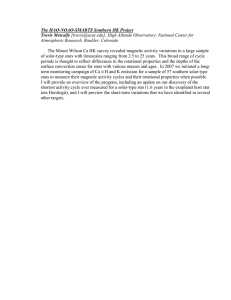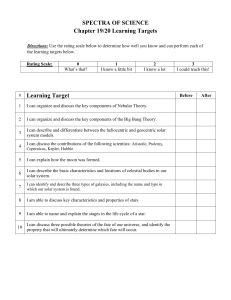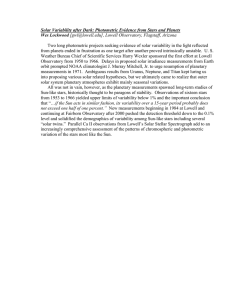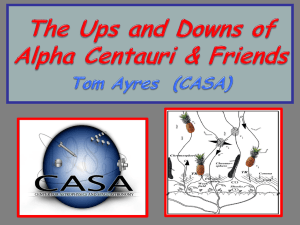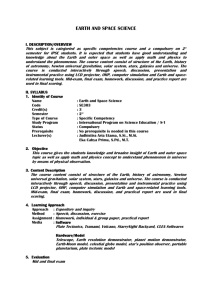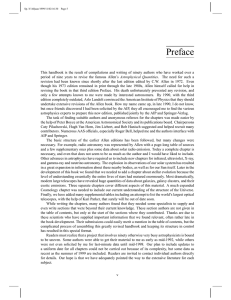The Sun and the Kepler Solar-Type Stars: Quiescence and... Hugh Hudson
advertisement
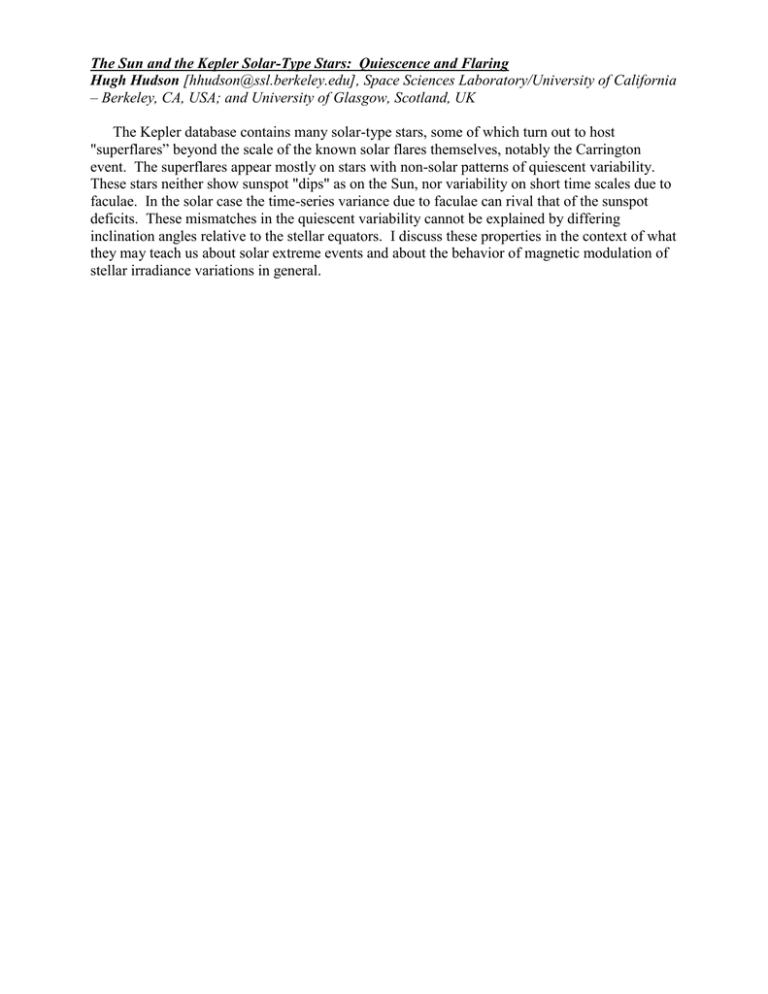
The Sun and the Kepler Solar-Type Stars: Quiescence and Flaring Hugh Hudson [hhudson@ssl.berkeley.edu], Space Sciences Laboratory/University of California – Berkeley, CA, USA; and University of Glasgow, Scotland, UK The Kepler database contains many solar-type stars, some of which turn out to host "superflares” beyond the scale of the known solar flares themselves, notably the Carrington event. The superflares appear mostly on stars with non-solar patterns of quiescent variability. These stars neither show sunspot "dips" as on the Sun, nor variability on short time scales due to faculae. In the solar case the time-series variance due to faculae can rival that of the sunspot deficits. These mismatches in the quiescent variability cannot be explained by differing inclination angles relative to the stellar equators. I discuss these properties in the context of what they may teach us about solar extreme events and about the behavior of magnetic modulation of stellar irradiance variations in general.
